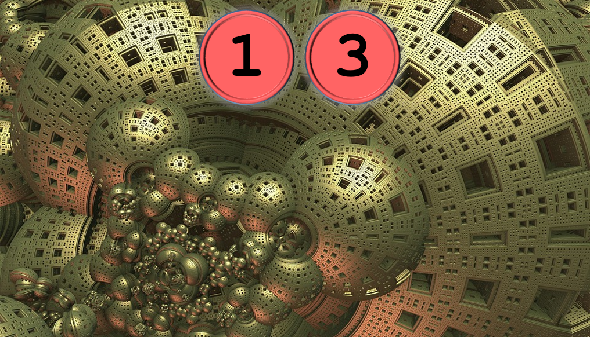In 2013 George Lasry broke a ciphertext many had considered unbreakable. In the wake of this success, a few crypto experts created a similar challenge with an even higher level of difficulty. Is this one unbreakable? So far, nobody has solved it.
Click here for the complete top 50 list
The story of today’s unsolved cryptogram began in 1999, when Otto Leiberich, the former president of the German crypto authority Zentralstelle für das Chiffrierwesen (ZfCh), published an article in Spektrum der Wissenschaft. This article (written in German) is now available online (unfortunately, the box with the most interesting part is missing).
The Double Columnar Transposition
In his article, Leiberich mentions the “Doppelwürfel”, also known as the Double Columnar Transposition (DCT), an encryption method that was used by East Erman agents during the Cold War. The DCT is a cipher that can be carried out solely with paper and pencil – no machine or computer program is needed. It is one of the best manual ciphers known.
To explain the DCT let’s encrypt the sentence TO BE OR NOT TO BE. We use RAIN as the keyword. First we write the plaintext below the password:
RAIN ---- TOBE ORNO TOTO BE
Now, we sort the columns of the table such that the letters of the password stand in alphabetical order:
AINR ---- OBET RNOO OTOT E B
Next, we read out the message column-wise: ORNOBNTEEOOTOTB. What we have done so far, is a single columnar transposition. If we apply the same procedure again (with a different keyword), we get a DCT.
The challenge
During the Cold War, Otto Leiberich and his team worked intensively on the cryptanalysis of the DCT. In 1974, one of their results led to the exposition of spy Günter Guillaume, who was chancellor Willy Brandt’s senior aide.
In order to encourage research on the DCT, Leiberich suggested in his article that a double transposition challenge be put forward. Leiberich’s recommendations for this challenge included the following:
- Both keywords should have 20 to 25 characters.
- The lengths of the two keywords should be co-primes (no common divisor except 1).
- The length of the ciphertext should not be a multiple of the length of either keyword.
- A ciphertext of approximately 500 characters (which is approximately the product of the lengths of the two keys) should be used.
As Otto Leiberich never published a challenge of this kind himself, I decided to do so.
For my challenge, I chose an English plaintext and encrypted it using two keywords, both derived from English phrases longer than 20 letters. The length of the plaintext was 599. I published this challenge in 2007 in my book Codeknacker gegen Codemacher and on the internet. The cryptographic challenges site, MysteryTwister C3, took it over. In 2013, I published the DCT cryptogram in my top 25 unsolved cryptograms series (in German). Here it is:
VESINTNVONMWSFEWNOEALWRNRNCFITEEICRHCODEEA
HEACAEOHMYTONTDFIFMDANGTDRVAONRRTORMTDHE
OUALTHNFHHWHLESLIIAOETOUTOSCDNRITYEELSOANGP
VSHLRMUGTNUITASETNENASNNANRTTRHGUODAAARAO
EGHEESAODWIDEHUNNTFMUSISCDLEDTRNARTMOOIREEY
EIMINFELORWETDANEUTHEEEENENTHEOOEAUEAEAHUHI
CNCGDTUROUTNAEYLOEINRDHEENMEIAHREEDOLNNIRAR
PNVEAHEOAATGEFITWMYSOTHTHAANIUPTADLRSRSDNOT
GEOSRLAAAURPEETARMFEHIREAQEEOILSEHERAHAOTNT
RDEDRSDOOEGAEFPUOBENADRNLEIAFRHSASHSNAMRLT
UNNTPHIOERNESRHAMHIGTAETOHSENGFTRUANIPARTAOR
SIHOOAEUTRMERETIDALSDIRUAIEFHRHADRESEDNDOION
ITDRSTIEIRHARARRSETOIHOKETHRSRUAODTSCTTAFSTHCA
HTSYAOLONDNDWORIWHLENTHHMHTLCVROSTXVDRESDR
I never expected that the DCT cryptogram could be broken. Neither did Otto Leiberich, who was very interested in this challenge.
The solution
Later in 2013, I received an email from a certain George Lasry from Israel. He claimed to have solved the DCT challenge.
As I receive mails of this kind quite often, I didn’t pay much attention to it. I decided to take a look at this alleged solution later, when I had more time. However, after three weeks, the people from MTC3 informed me that George’s solution in their view was correct. So, I checked George’s mail and I realised that the MTC3 people were right.




Kommentare (11)